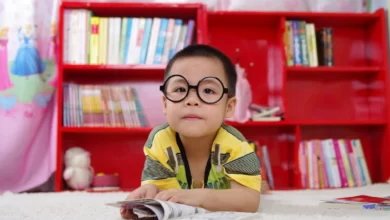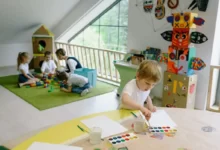Parenting is often described as a journey filled with joys and challenges. One of the most significant challenges parents face is discipline. How do you guide your children towards healthy behavior and responsible choices while maintaining a positive and nurturing environment? The answer lies in the art of positive discipline, a holistic approach that focuses on teaching, understanding, and fostering healthy behavior in children. In this article, we will look into the principles and strategies of positive discipline, exploring how it can benefit both children and parents alike.
Understanding Positive Discipline
Positive discipline is not just about punishment or control. Instead, it’s a philosophy and a set of practices aimed at helping children develop self-discipline, responsibility, and a strong sense of right and wrong. At its core, positive discipline is based on mutual respect, open communication, and empathy. It encourages parents to understand the underlying causes of their child’s behavior and respond with kindness and guidance.
The Foundations of Positive Discipline
- Mutual Respect: Building a foundation of mutual respect is essential in positive discipline. This means treating your child with the same level of respect and consideration that you expect from them. By modeling respectful behavior, parents create an environment where children feel valued and heard.
- Open Communication: Positive discipline relies heavily on open and honest communication. Parents should encourage their children to express their thoughts and feelings without fear of judgment. This helps children learn to articulate their needs and concerns effectively.
- Empathy: Empathy is the cornerstone of positive discipline. It involves understanding and sharing your child’s feelings and perspective. When parents empathize with their children, they can better address their emotional needs and guide them towards appropriate behavior.
- Consistency: Consistency is key to positive discipline. Parents should establish clear expectations and boundaries and consistently enforce them. Children thrive when they know what to expect and understand the consequences of their actions.
The Role of Punishment
In traditional discipline methods, punishment often takes center stage. However, positive discipline takes a different approach. While consequences for misbehavior are still present, they are approached in a more constructive manner. Instead of punitive measures, positive discipline focuses on teaching children valuable life skills and problem-solving techniques.
The Benefits of Positive Discipline
1. Builds Strong Parent-Child Relationships
Positive discipline fosters trust and open communication between parents and children. When children feel heard and understood, they are more likely to turn to their parents for guidance and support. This strong parent-child bond forms the basis for healthy relationships in the future.
2. Encourages Self-Discipline
Positive discipline empowers children to develop self-discipline. Instead of relying on external control, children learn to regulate their behavior from within. This self-discipline serves them well throughout their lives, helping them make responsible choices and navigate challenges effectively.
3. Enhances Problem-Solving Skills
Through positive discipline, children develop problem-solving skills. When they encounter difficulties or make mistakes, parents guide them in finding solutions rather than simply punishing them. This empowers children to approach challenges with confidence and resilience.
4. Promotes Emotional Intelligence
Emotional intelligence is a crucial life skill, and positive discipline helps children develop it. By acknowledging and validating their emotions, parents teach children to identify and manage their feelings effectively. This emotional awareness is invaluable for building healthy relationships and coping with life’s ups and downs.
5. Reduces Negative Behavior
Positive discipline is effective in reducing negative behavior. When children understand the consequences of their actions and have the tools to make better choices, they are less likely to engage in disruptive or harmful behavior.
Practical Strategies for Positive Discipline
Now that we’ve explored the foundations and benefits of positive discipline, let’s delve into some practical strategies that parents can implement to foster healthy behavior in their children.
1. Set Clear Expectations
Start by setting clear expectations and boundaries. Children need to know what is expected of them in various situations. Clearly communicate rules and consequences, and be consistent in enforcing them.
2. Use Positive Reinforcement
Instead of focusing solely on the negative, use positive reinforcement to acknowledge and reward good behavior. Praise and encouragement can be powerful motivators for children.
3. Offer Choices
Give children a sense of autonomy by offering them choices within reasonable limits. For example, let them choose their outfits or decide what healthy snack they’d like to have. This helps them feel in control and reduces power struggles.
4. Teach Problem-Solving
When conflicts arise, use them as opportunities to teach problem-solving skills. Encourage your child to think about alternative solutions and discuss the potential consequences of each choice.
5. Time-Outs and Cooling-Off Periods
In situations where emotions run high, time-outs can be beneficial for both parents and children. A brief break allows everyone to cool off, and it can lead to more productive discussions once emotions have settled.
6. Model Empathy and Emotional Regulation
Children learn by example, so it’s essential for parents to model empathy and emotional regulation. When parents demonstrate how to handle emotions constructively, children are more likely to follow suit.
7. Foster Open Communication
Create an environment where your child feels comfortable expressing their thoughts and feelings. Listen actively and without judgment, and encourage them to share their concerns and questions.
8. Be Patient and Consistent
Positive discipline is a long-term approach that requires patience and consistency. Change takes time, and it’s essential to remain committed to the process.
Common Challenges in Positive Discipline
While positive discipline offers numerous benefits, it’s not without its challenges. Here are some common obstacles parents may encounter and how to overcome them:
1. Inconsistency
Inconsistency in applying rules and consequences can confuse children. To overcome this, establish clear guidelines and ensure both parents are on the same page regarding discipline.
2. Time and Effort
Positive discipline requires time and effort, which can be demanding for busy parents. However, the long-term benefits far outweigh the initial investment. Consider it an investment in your child’s future.
3. Resistance to Change
Children may resist positive discipline, especially if they are used to more punitive methods. Be patient and persistent in implementing positive discipline strategies, and over time, your child is likely to adapt to the new approach.
4. Balancing Structure and Freedom
Finding the right balance between setting boundaries and allowing freedom can be challenging. Remember that positive discipline encourages autonomy within limits, and this balance will evolve as your child grows.
Conclusion
The art of positive discipline is a transformative approach to parenting that empowers children to develop self-discipline, problem-solving skills, and emotional intelligence. By building strong parent-child relationships based on mutual respect, open communication, and empathy, parents can guide their children towards healthy behavior and responsible choices. While positive discipline may require patience and effort, the long-term benefits for both children and parents make it a worthwhile endeavor. Ultimately, positive discipline isn’t just about shaping children’s behavior; it’s about nurturing their growth into confident, responsible, and compassionate individuals who are well-equipped to navigate life’s challenges.









